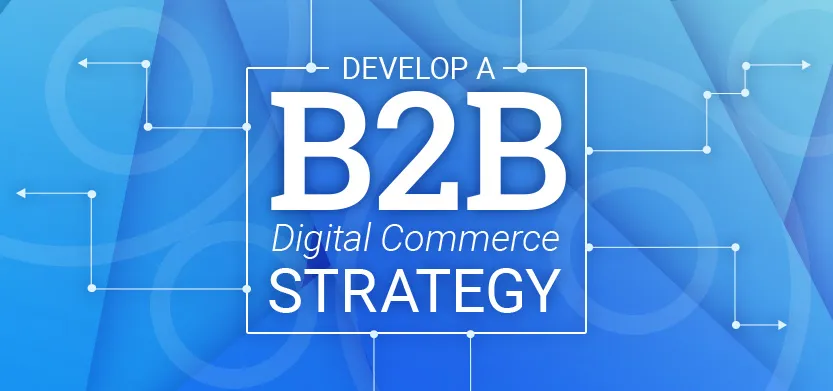

Posted in Digital Commerce
September 25, 2023
How to Develop a B2B Digital Commerce Strategy
Developing a B2B digital commerce strategy
If you already have a website with self-service options, great! Now is the time to start looking at improvements and thinking about how to enhance the customer experience with your clients who are already using your digital commerce solution.
Once you get your digital commerce offerings nailed down and running, these are some common pain points that most businesses, B2B or B2C, should spend time considering and making plans to address with a continuous improvement strategy.
- Plan the length of the ordering process. Decision-makers are increasingly frustrated with convoluted purchasing journeys and will drop suppliers if the buying process has too many steps.
- Think like a consumer. Ensure any e-commerce channel provides a B2C-like experience for every product or service, whether a new purchase or a repeat order.
- Fix hard-to-find products and insufficient search options. Make finding product pages as easy as possible. Include clear headings for catalogues and make sure that your on-page search functionality is top-notch.
- Rapidly fix what’s broken on websites and mobile apps. Watch for technical issues in real-time and resolve them as they appear. Making sure your site is operating optimally could increase revenue incrementally and improve the digital experience in ways that promote increased loyalty.
Helping customers adopt your new digital commerce options
In some cases, encouraging customers to abandon old habits is a hard sell. Especially with older clients, there are relationships and nuances that come with traditional sales. Shifting customers away from face-to-face selling can be exceptionally difficult, but it can be done with the right approach. Think about the best experience you have had with a retail website and seriously consider how your website can match that.
Make sure that buyers can readily find ALL the product information they need, compare options, make purchases, and receive service without live support from sales reps for less complex needs. Ensure that live support is available at the right time during more complex purchasing situations.
Speed, transparency and expertise are key to delivering a best-in-class customer experience. By applying those attributes across all your sales channels, you will quickly achieve the experience that your customers are looking for. Live chat, for example, is an option that delivers speed, transparency, and expertise—things that customers value most.
“Results in our 2019 survey showed that those suppliers who provide outstanding digital experiences to their buyers are more than twice as likely to be chosen as a primary supplier than those who provide poor experiences, and about 70 percent more likely than those providing only fair ones.” - McKinsey & Company
Other processes you can implement that will draw your customers to your online experience:
- Train your sales rep to run customer meetings via videoconferencing (Google Hangouts, Zoom, Skype, etc.).
- Host multi-customer virtual product demos, launches and info sessions with phone follow-up from reps.
- Publish and email tailored content that reflects your customers’ needs and current reality.
Track how well your digital commerce strategy is working
Implementing a new strategy means figuring out what is working and what isn’t. That means on top of getting your digital commerce strategy planned out, you also need to figure out a way to report on the efficacy of the improvements you have made and figure out where to spend your time and energy next.
Useful areas to benchmark and track:
- Churn rates, customer loyalty and satisfaction
- Performance variations between digital and in-person sales channels
- Link ecommerce sales goals to your overall sales targets and incentive systems. Be willing and able to double-count credit when customers interact both digitally and with sales reps.
One final word of advice
Developing a digital commerce strategy requires the coordination of many different departments, strategies and technology requirements. Excluding one of these departments in the construction of the overall strategy will result in complications or outright failures, so getting all your internal stakeholders on board before you start a digital transformation is key. Spend time doing your research and present clear, data-driven reasoning for the changes your company needs.
Starting a digital commerce strategy is not a quick or easy task. Every B2B business has different parameters that they work within, and each will require its own specific action plan. If you are feeling overwhelmed with this process, we are here to help. Acro Commerce has years of experience and dedicated subject matter experts to get your company online or improve your digital commerce experience quickly and effectively. Reach out today to speak with one of our ecommerce software consultants and start moving your B2B company towards providing better digital experiences and increasing sales.
Editor's note: This article was originally published November 19, 2020. The content has been updated for accuracy and freshness.
